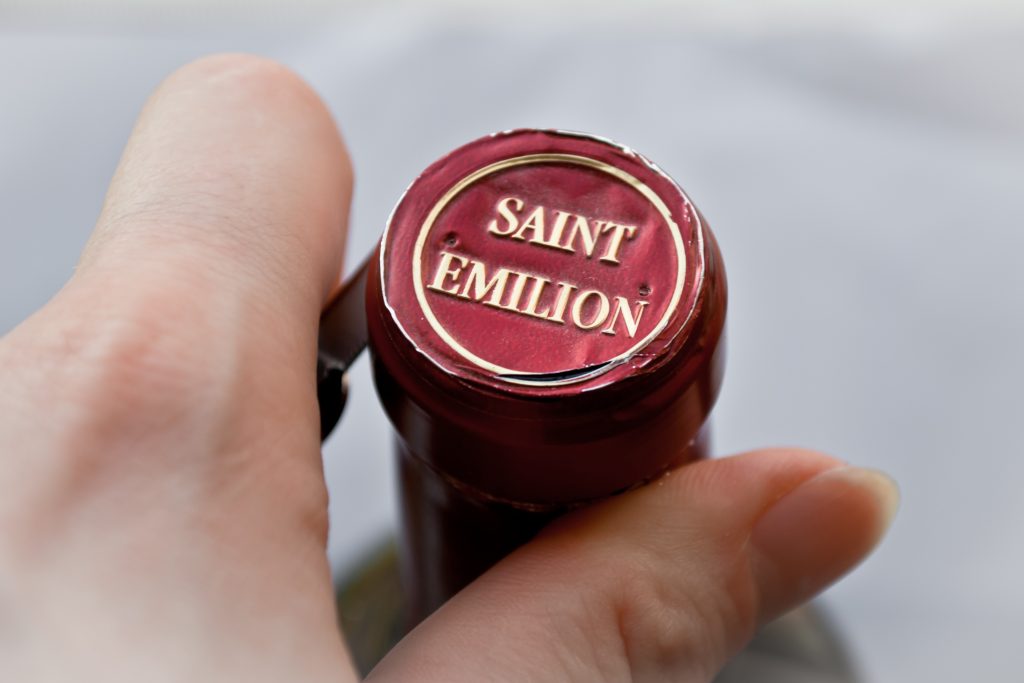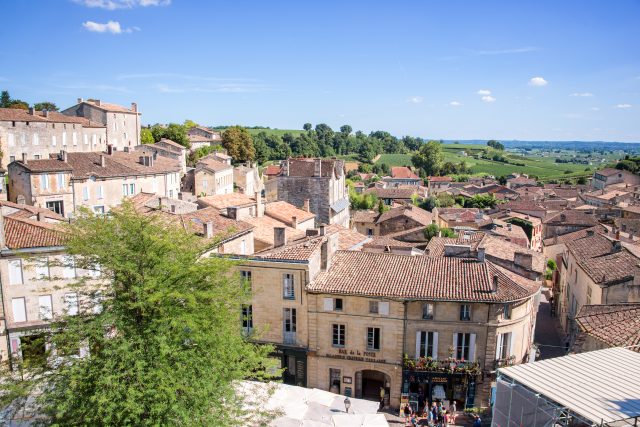The Saint-Émilion Classification passes its credibility test
8 September 2022 brought saw the publication of the INAO’s new classification of the wines of Saint-Émilion and, with it, a huge collective sigh of relief from the vineyards of this most hallowed of right-bank appellations.

The most contentious and, invariably, the most legally contested classification of all has been safely updated, it seems, without any significant further damage to its reputation.
That may not sound like a great achievement. But anyone who has followed the soap opera that the classification of the wines of Saint-Émilion has become over last two years in particular will appreciate that no news – or, at least, no bad news – is very good news indeed.
A collective sigh of relief is, in a way, about as good as it could get. That the lawyers may have stopped rubbing their hands (for now) is cause in itself for celebration (and will perhaps give the callouses formed from previous bouts of rubbing time to heal!).
But there is genuinely good news here too, even if it should surprise no-one. Indeed, the danger in the recent history of the classification is that we have become so accustomed to dwelling on the bad news that we are unable to take in, and to reward appropriately, the good news when it comes.
So it is crucial that we start by celebrating the promotion of Figeac to Premier Grand Cru Classé A, alongside Pavie. This is Figeac’s moment and it is well merited. It is, of course, also somewhat overdue. Many felt that Figeac was unlucky not to have been promoted alongside Angélus and Pavie back in 2012. But, for today at least, that is not the issue. It has been promoted; it richly deserves that promotion; and it honours the appellation to have Figeac join Pavie at the pinnacle of the classification. Let me join in the collective chorus of acclaim (within the appellation and beyond) in congratulating the Manoncourt family and Frédéric Faye, Figeac’s deeply accomplished director general since 2013 and the architect of the strategy to secure this richly-deserved promotion.
To be fair, any other result would have been a travesty – and widely seen as such. But we need to remember that the classification is, in a way, quite a conservative institution – as it always has been. Figeac has been made to bide its time, despite the strength of its case for promotion in 2012.
Three to watch

And the same can perhaps now be said for another three properties that may well be somewhat disappointed not to have been promoted in 2022. They are Canon, Troplong-Mondot and, I would add, Bélair-Monange. All three in my view (and that of many others) are making wines today of unimpeachable Premier Grand Cru Classé A quality (and they are not the only ones). But, at this level, the classification judges performance over 15 consecutive vintages (2005-2019 inclusive) – and therein lies the problem (and the conservatism). For none of these wines was at the level it is today in, say, 2005, 2006 or 2007.
If they do as Figeac has done, and retain (or even augment further) the quality of the wines they are producing over the next decade, their time will surely come. But, as that suggests, Figeac is in a different category today and there is something appropriate about being able to celebrate its success alone.
As far as the other Premiers Grands Crus Classés are concerned, there are essentially no changes – or, at least, no additional changes. At Premiers Grands Crus Classés A level Angélus, Ausone and Cheval Blanc, as is well known, have now left the classification entirely; they do not appear in the new classification (and cannot be expected to return to the fold any time soon). They were followed more recently by La Gaffelière which, had it not withdrawn from the classification, would have been demoted from Premier Grand Cru Classé B (in the absence of any legal challenge).
Notably, there is not a single promotion from Grand Cru Classé to Premier Grand Cru Classé. That will disappoint many; but it is also hardly surprising. For the most credible candidates from the 2012 classification, simply in terms of the quality of the wines they produce (such as Grand Corbin-Despagne), tend not to command the kind of market position and price point required for promotion. Indeed, if we think about the next classification exercise – and strange though it may seem – it is perhaps easier to imagine the further promotion of a new entry like La Croix de Labrie than it is the promotion of longer-standing members of the Grand Cru Classé club. Either way, the barrier to Premier Grands Cru Classé entry seems to be becoming more difficult to breach.
We are left, then, with just 14 Premiers Grands Crus Classés, 2 of which (Figeac and Pavie) are classified A, the remaining 12 B.
Grand Cru Classé
There has been rather more action at Grand Cru Classé level. In the 2012 reclassification exercise, 64 properties were classified Grands Crus Classés. In 2022 that has risen to 71.
Partner Content
Yet despite the net increase in the number of properties at this level it is the departure of familiar names that one notices first. 13 wines that featured in the 2012 classification are missing from the 2022 classification. Yet none of them has actually been demoted or declassified. So what has happened?
As discussed above, four of the Premiers Grands Crus Classés have left the classification altogether (Angélus, Ausone, Cheval Blanc and La Gaffelière). Two more (La Clotte and Quinault L’Enclos) left the ranks of the Grands Crus Classés at the same time with them (with the properties linked, as they are, to Ausone and Cheval Blanc respectively). All of the rest (7 in total) have already been or would now seem to be in the process of being absorbed into larger properties (L’Arrosée, Tertre Daugay and Grand Pontet into Quintus; Pavie Decesse into Pavie; Les Grands Murailles into Clos Fourtet; Clos La Madeleine into Bélair-Monange; and Faurie de Souchard into Dassault). Indeed, in the cases of Pavie Decesse, Les Grands Murailles, Clos la Madeleine and Faurie de Souchard it is really only their absence from the classification that leads us to infer that they will, henceforth, cease to exist as separate labels.
That, in itself, is fascinating – and arguably a little depressing. If we take Pavie Decesse as an example, it is not difficult to understand the commercial logic underpinning any incorporation of its vineyard into that of Pavie. Its meagre 3.7 hectares will, presumably, be subject to a very strict selection which will, in turn, ensure that the quality of both Pavie itself and of Arômes de Pavie (the second label) are enhanced. Given the current price differential between Pavie and Pavie Decesse, even an ultra-strict selection would yield a financial dividend whilst only improving the quality of the first and second wines. But in the process we risk losing a famous label and the capacity to enjoy its singular and distinct terroir vinified separately. The same applies to Les Grands Murailles, Clos La Madeleine Faurie de Souchard and Grand Pontet too (though each case is, of course, subtly different).
And what about the additions? There are several – 16 in total. That sounds like a lot; and in a sense it is. However, it needs to be acknowledged that whereas 90 dossiers were submitted to the panel for consideration in the 2012 reclassification exercise, that swelled to an impressive 114 in 2022 (140 files were opened, but only 114 completed dossiers were ultimately evaluated). A lot of applications have, then, been rejected. Consequently, even if the ranks of the Grands Crus Classés have grown, it would be wrong to see the classification exercise as having become less strict – perhaps in the face of anxieties about legal challenges (as some had feared).
What is clear is that a number of dossiers (almost certainly a higher proportion than in previous exercises) were refused on purely technical grounds, with the wines never being tasted by the panel. Such dossiers include those submitted by Peter Sisseck for Rocheyron and, it seems, by Jonathan Maltus for Le Dôme (probably for very similar reasons). Both properties might, otherwise, have been credible candidates for Premier Grand Cru Classé status – and both could be again in the next reclassification.
Rising stars
Amongst the new additions are a number of rising stars of the appellation – Vignoble K’s Tour Saint Christophe, the Axelle and Pierre Courdurié’s La Croix de Labrie, Pierre Seillan’s Lassègue, Benoit Trocard’s Clos Dubreuil, the Todeschini family’s Mangot, Jean Philippe Janoueix’s La Confession and Catherine Papon-Nouvel’s tiny Clos Saint-Julien (which must come close to challenging Clos Saint-Martin as the smallest classified growth in the entire appellation). We also see the return the fold of the previously de-classified, Corbin Michotte (it is nice to see this saga end well).
The rest are an interesting mix of the familiar and the less familiar. They include some wines that I must confess to knowing a little less well (and in some cases, hardly at all) – since they tend not to be distributed today through La Place de Bordeaux. But it is, quite frankly, refreshing to see such new additions – particularly as they have been selected for inclusion through a robust, discriminating and competitive reclassification process that seems, overall, to have passed the test many thought it incapable of passing.
Those that I have managed to speak to in Saint-Émilion in the last few days seem to be breathing a little more easily today. They hope and expect things to become more serine (‘serein’ is the word they all seemed to use). The hope is a long-standing one, but the expectation is new… and when it comes to the internal politics of the appellation and the classification of Saint-Émilion that counts as significant progress.
The revised classification
Premier Grand Cru Classé A
- Figeac*
- Pavie
[departures: Angélus; Ausone; Cheval Blanc]
Premier Grand Cru Classé B
- Beauséjour Bécot
- Beaséjour Heritiers Duffau-Lagarrosse
- Bélair-Monange
- Canon
- Canon-La-Gaffelière
- Clos Fourtet
- Larcis Ducasse
- La Mondotte
- Pavie Macquin
- Troplong Mondot
- Trottevieille
- Valandraud
[departure: La Gaffelière]
Grand crus classés
- Badette*
- Balestard la Tonnelle
- Barde-Haut
- Bellefont-Belcier
- Bellevue
- Berliquet
- Boutisse*
- Cadet-Bon
- Cap de Mourlin
- Chauvin
- Clos Badon Thunevin
- Clos de L’Oratoire
- Clos de Sarpe
- Clos des Jacobins
- Clos Dubreuil*
- Clos Saint-Julien*
- Clos Saint-Martin
- Corbin
- Corbin Michotte*
- Côte de Baleau
- Couvent des Jacobins
- Croix de Labrie*
- Dassault
- De Ferrand
- De Pressac
- Destieux
- Faugères
- Fleur Cardinale
- Fombrauge
- Fonplégade
- Fonroque
- Franc Mayne
- Grand Corbin
- Grand Corbin-Despagne
- Grand Mayne
- Guadet
- Haut-Sarpe
- Jean Faure
- La Commanderie
- La Confession*
- La Couspaude
- La Croizille*
- La Dominique
- La Fleur Morange
- La Marzelle
- La Serre
- La Tour Figeac
- Laniote
- Larmande
- Laroque
- Laroze
- Lassègue*
- Le Châtelet*
- Le Prieuré
- Mangot*
- Monbousquet
- Montlabert*
- Montlisse*
- Moulin du Cadet
- Péby-Faugères
- Petit Faurie de Soutard
- Ripeau
- Rochebelle
- Rol Valentin*
- Saint-Georges (Côte Pavie)
- Sansonnet
- Soutard
- Tour Baladoz*
- Tour Saint Christophe*
- Villemaurine
- Yon Figeac
[departures: Faurie de Souchard; Grand Pontet; Pavie Decesse; La Clotte; Quinault L’Enclos; Les Grands Murailles; L’Arrosée; Tertre Daugay; Clos la Madeleine]
Related news
Strong peak trading to boost Naked Wines' year profitability




